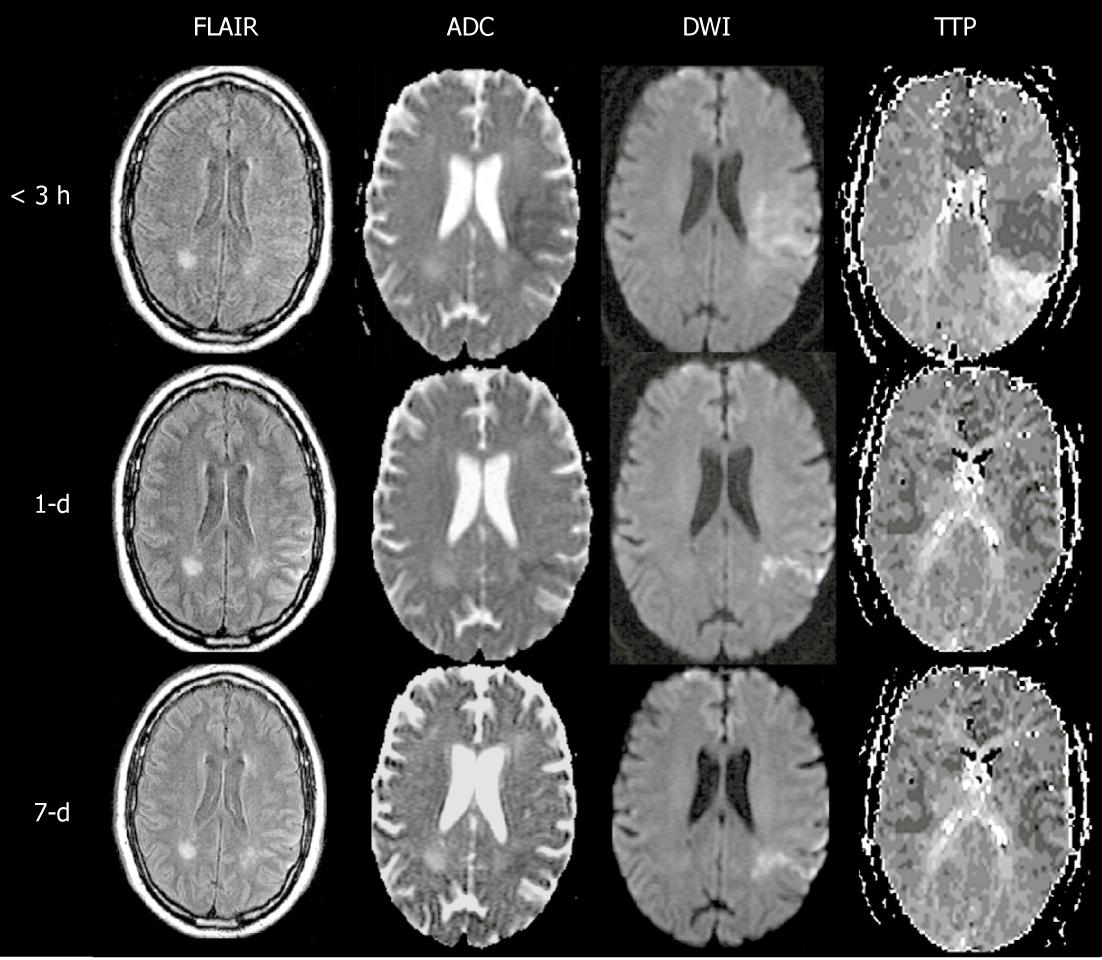Copyright
©2012 Baishideng Publishing Group Co.
Figure 3 Main pattern of perfusion-diffusion mismatch, perfusion-weighted imaging = diffusion-weighted imaging, in a patient with acute stroke.
< 3 h: Fuzzy diffusion-weighted imaging (DWI) lesion in left middle cerebral artery territory matching an area of diminished time to peak, indicating local hyperperfusion and spontaneous recanalization had occurred prior to imaging at 3 h after onset (note the prolonged time to peak at the posterior edge of the DWI lesion, suggesting distal branch occlusion); 1-d: The next day, perfusion has essentially normalized as well as the DWI lesion, save for a narrow posterior streak, suggesting the spontaneous recanalization saved the at-risk tissue from progressing to infarction; 7-d: At day 7, there has been no return of the DWI lesion, indicating the tissue was effectively salvaged (reprint from Muir KW et al Lancet Neurol 2006; 5: 755-768 with permission). PWI: Perfusion-weighted imaging; ADC: Apparent diffusion coefficient; TTP: Time to peak; FLAIR: Fluid-attenuated inversion-recovery.
- Citation: Chen F, Ni YC. Magnetic resonance diffusion-perfusion mismatch in acute ischemic stroke: An update. World J Radiol 2012; 4(3): 63-74
- URL: https://www.wjgnet.com/1949-8470/full/v4/i3/63.htm
- DOI: https://dx.doi.org/10.4329/wjr.v4.i3.63









